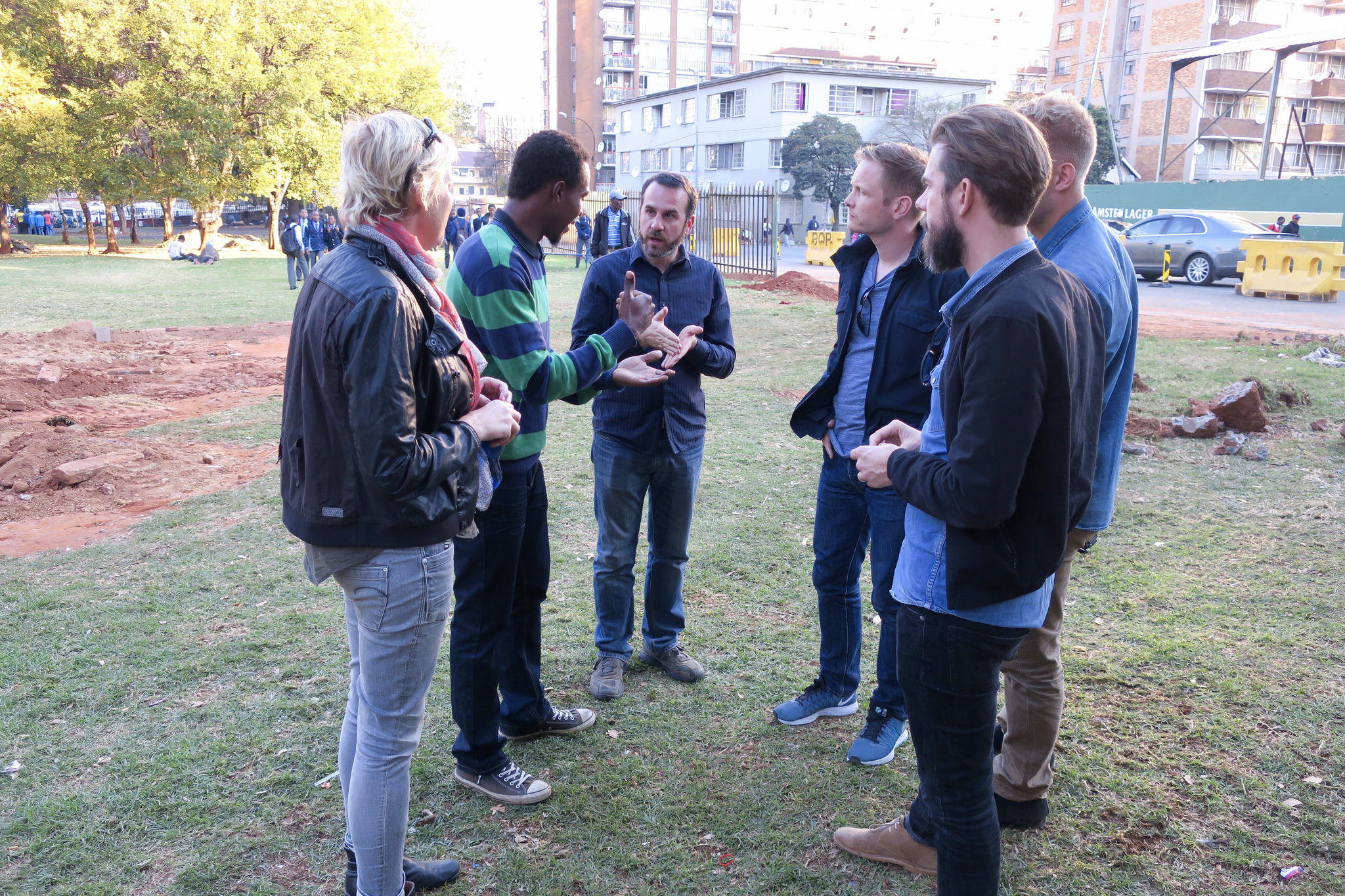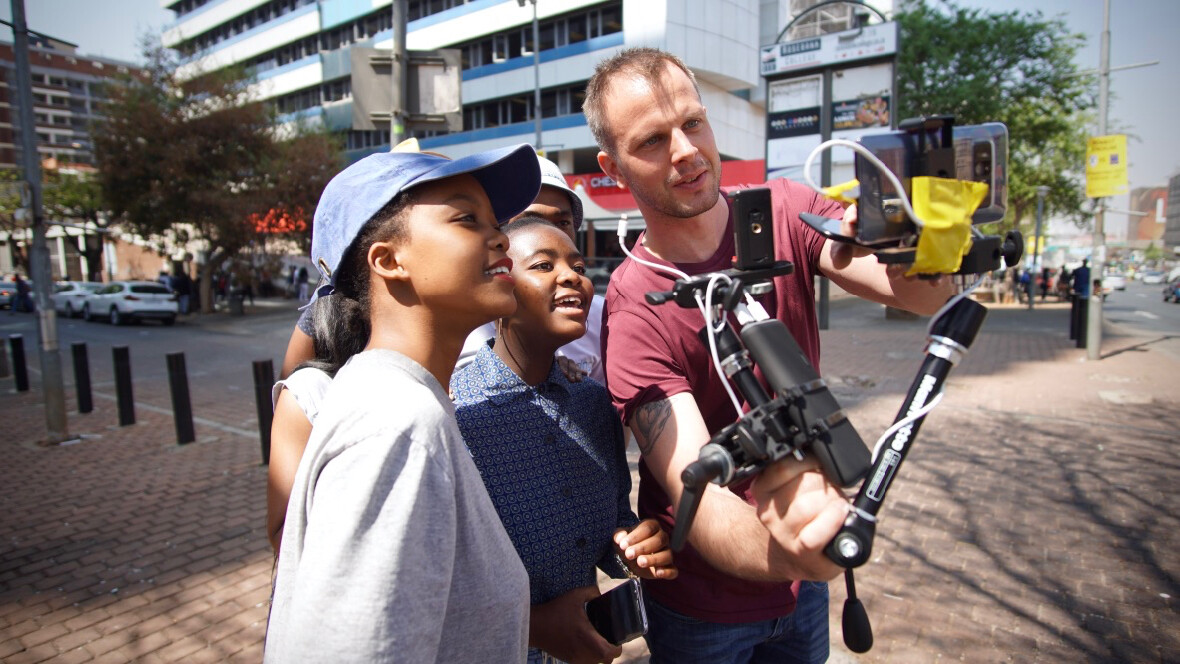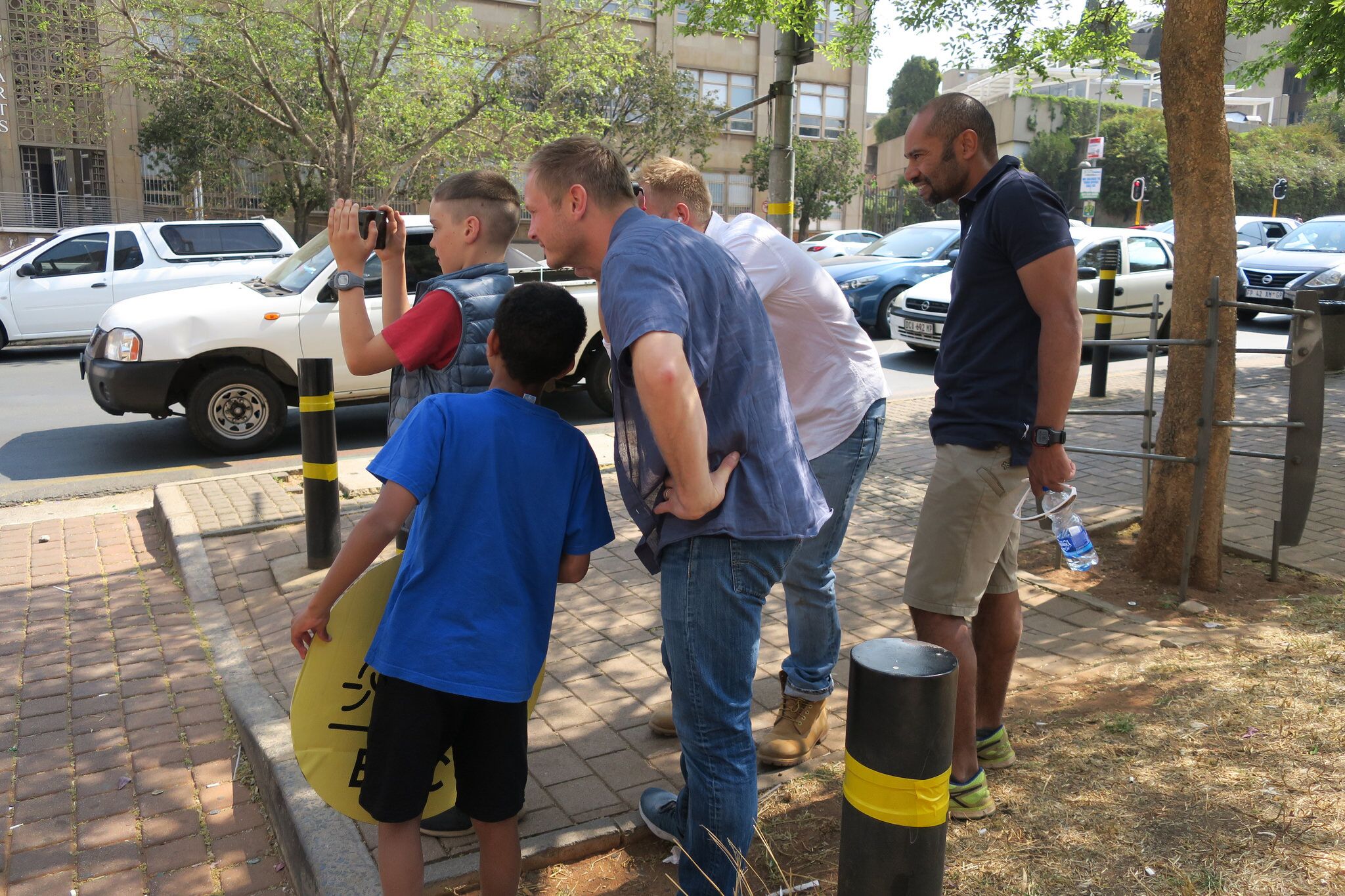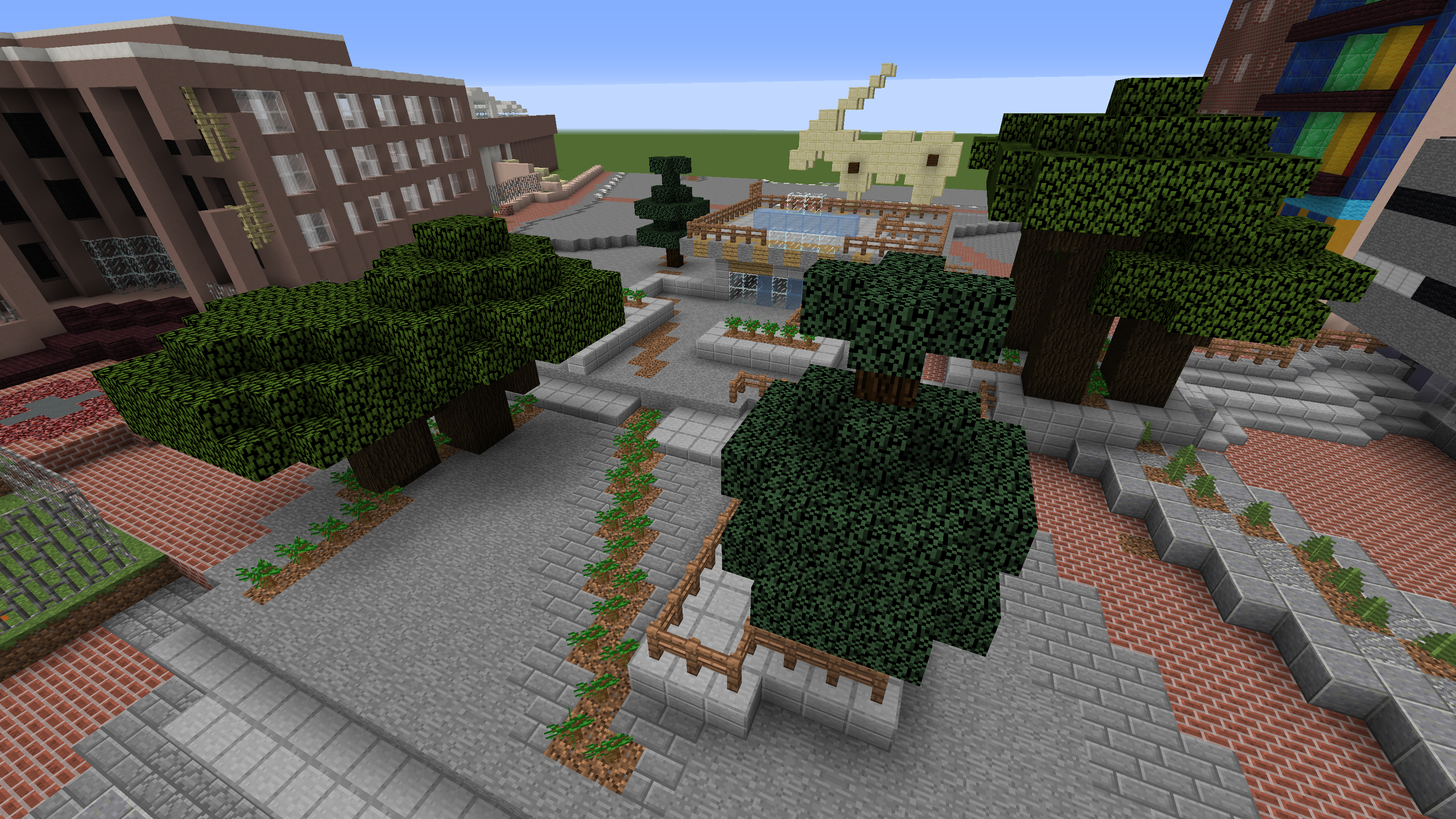Johannesburg, 29 October 2019 – While the process of developing and testing mixed reality in Stockholm allowed the joint UN-Habitat and Ericsson team to assess the participatory potential of the technology in urban planning, they weren’t content to leave it in the realm of possibility. The team wanted to take these theoretical possibilities and firmly root them in reality on the city-scale — and a project quickly arose that allowed them to do so.
In 2017, a regeneration project focused on improving public space in Johannesburg, South Africa provided the perfect opportunity to conduct a Block by Block workshop incorporating mixed reality technology.
The regeneration project, organized by the Johannesburg Development Agency and UN-Habitat, also included the City of Johannesburg and local partner organizations Sticky Situations and Bantu Design. This diverse team chose the downtown neighborhood of Braamfontein out of a number of locations in the city that were prioritized for regeneration to conduct a Block by Block mixed reality pilot.

“Braamfontein is really unique,” says Nikki Pingo, the development facilitation manager at the Johannesburg Development Agency. “It’s got this really youthful population with the universities and it has critically become a space where we all coexist because there’s an energy and that energy really is the youth of South Africa rebuilding the post-apartheid city.”
Contracting a professional 3D modeling company, the team produced two digital models of the same public space in Braamfontein: one detailed 3D model and one Minecraft model that could be manipulated by participants to share alternate designs.
The City of Johannesburg then helped coordinate the ‘pop-up’ public participation project in Braamfontein to test out the technology and obtain design input. Participants in the project used Minecraft on a laptop to design an improved version of the existing public space. Upon finishing their design, they went outside and, by looking through a mobile phone, viewed their designs in ‘’virtual real life.’’ They got to walk around the digital objects and structures they had made as if they were physically present. The feedback was tremendous.

“This allows you to see it in 3D,” one participant said. “It’s like you sort of see it live before it’s there.” Another participant commented on how the mixed reality Minecraft design process allowed her to better visualize her design and provided the flexibility to change her design based on what she saw when it became 3D. Others expressed how it made the process of designing public space “way more interesting.”
Evidently, using technologies like Minecraft and mixed reality can remove barriers to public engagement and even create an incentive for the youth to be involved in urban planning, since they are much more likely to engage with games like Minecraft than attend traditional town hall meetings.
Along with youths, using mixed reality technology to crowdsource design ideas includes other groups whose experiences and perspectives aren’t typically included in the discussion of the built environment
“We saw, in the participatory process, a lot of issues around safety for women,” Pingo says. “For example, the women wanted to change a configuration of seating, which had created a wall of where young men would sit and have good times. It became a negative space for young women to walk through. We saw specific interventions with Minecraft, such as how else the seating could work, that [the team] took into consideration.”
Furthermore, the involvement of the City of Johannesburg in the project shows how this technology can bridge the gap between communities and policy makers when it comes to urban planning. Traditionally, city planners and officials present urban development plans at town hall meetings and the information flow is one-way: from officials to citizens. Mixed reality disrupts the notion of residents as mere consumers of government services or indifferent, adaptable players in city planners’ game of urban Legos. Instead, mixed reality turns residents into active players in the design process, giving them agency to co-create their surroundings.

As Angel Khumalo from partner organization Sticky Situations says, “I think the issues you normally get around the world is how governments see communities as something that they need to provide a service for without understanding that if we all came together and had a conversation at the table…the community can start taking ownership of spaces and these services themselves.”
None of this is to say that mixed reality comes without challenges. Powerful technology such as this requires coordination and cooperation between a number of divergent stakeholders. It also necessitates government support and access to advanced technology.
Yet it is only by taking the first steps to apply these technologies that such challenges can be overcome. Whether planners act or not, technology is going to continue changing not only the way people interact with the built environment, but also how the built environment is created.
“The assumption historically was that only the experts can make informed and educated decisions as to what and where to build,” says Dan Hill, head of strategic design at the Swedish Innovation Agency Vinnova. “That model should and will change as the public increasingly demand a seat at the design table.”
So, the real question is not whether using technology such as mixed reality will better or worsen the planning of our urban contexts. The question is whether we will use it not only to better our urban contexts, but also all the people who live in them.
